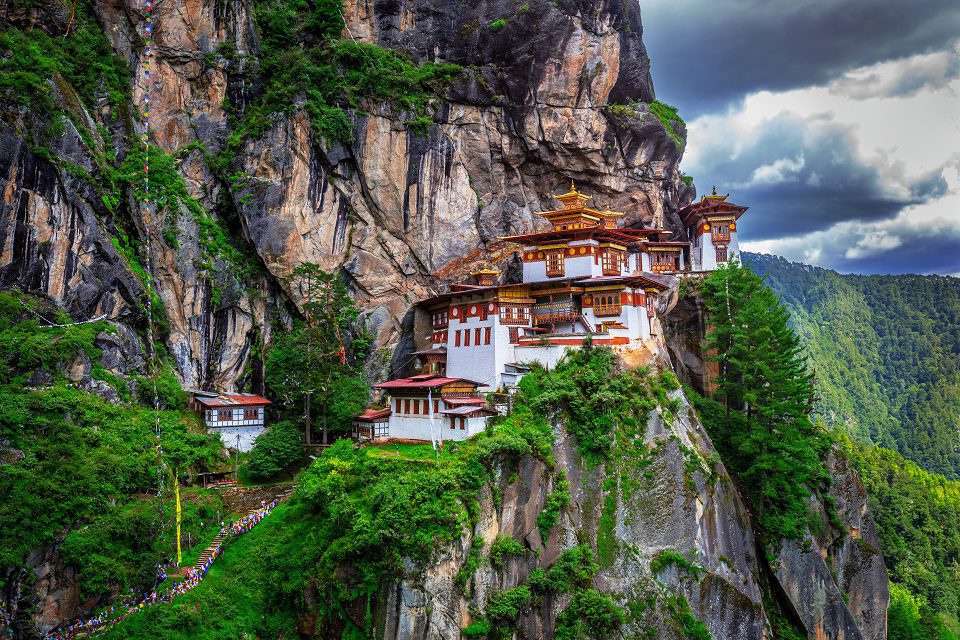
Since 287 foreign travellers set foot in previously off-limits Bhutan in 1974, tourism has flourished -numbers topped 209,000 in 2016. The Buddhist kingdom is keen to protect those Himalayan landscapes and cliff-perched monasteries through regulated tours. But more of Bhutan is opening up soon, thanks to new Drukair flights linking the main hub of Paro with the lush eastern area of Yongphulaand.
So why go there? The east is the least-trod slice of Bhutan and was previously only reached via treacherous mountain roads. But since Yongphula airport reopened in late 2017, the country’s eastern forests, temples and ancient villages are now just an easy hop away.
The hill-topping dzong (fortress) in Trashigang once defended the country against invading armies. Further east lies Sakteng Wildlife Sanctuary, a lush bird-rich swathe that is also home to snow leopards and red pandas.
Elsewhere, Lhuntse and Mongar are carved with cliffs and gorges, and locals are famed for their silk weaving. Both towns skirt vast wildernesses. The Bumdeling Wildlife Sanctuary (Lhuntse) is rich in butterflies and a winter home for migrating black-necked cranes, while Phrumsengla National Park (Mongar) has Bengal tigers and 341 recorded species of bird.
What else is new? The new flights stop en route in the central Bumthang District, too. Its four valleys (Ura, Chumey, Tang and Choekhor) are pocked with temples and monasteries – Buddhism was first introduced in Bhutan here. Elsewhere, spy the hilltop Jakar Dzong, a whitewashed fortress and visit the ’Burning Lake’, a pilgrimage site adorned in prayer flags where treasure is said to lie.
Great! Anything else? Paro, Bhutan’s international gateway, is worth a linger for its pastel-painted wooden shop fronts. The surrounding valley holds grander wonders though, with monasteries and fortresses pimping the contours.
Its crowning icon, Taktsang Palphug Monastery is worth the three-hour hike required and its white washed towers clinging to the rock – often through dense mist – is a classic sight. It’s a view that makes you glad Bhutan is so determined to protect its epic heritage.














